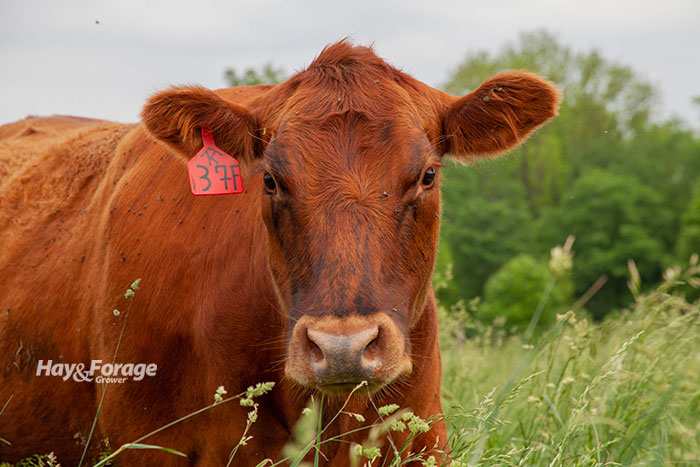
A buzzing fly is a bother, but a biting fly is a bully. Horn flies meet the latter description for many grazing operations, and these prolific pests can have a significant impact on animal health and performance.
According to Megan Van Emom, extension beef cattle specialist with Montana State University, horn fly populations are spiking in the Big Sky State. These pests cause cattle stress and discomfort, and Van Emom notes the combined annual costs of animal production losses and horn fly control methods can surpass $780 million across the United States.
Biting habits
Female horn flies lay eggs in manure where larvae hatch and develop into adults. Just one female can lay up to 500 eggs in its lifetime, and several generations of horn flies occur during the summer. Horn fly populations tend to peak in late summer before pupae overwinter in the soil when temperatures taper off in the fall.
Adult horn flies are small — only 3 to 5 millimeters in length — but they prefer to prey on large animals like heifers, steers, cows, and bulls rather than calves. Horn flies typically settle on the backs of cattle and move to the sides of animals’ stomachs to avoid direct sunlight.
Horn flies bite cattle and feed on their blood, and one insect can bite 20 to 30 times per day. Therefore, individual animals can receive thousands of bites per day if horn fly populations are high.
“Cattle that are infested with over 200 horn flies will begin to bunch together in attempt to escape the flies,” Van Emom explains. This behavior negatively influences grazing patterns and feed intake, which ultimately translates to lower feed efficiency, milk production, and weight gain.
Control methods
Using insecticide is the most effective way to limit horn fly populations in pastures, and there are many ways to administer it.
Dust bags dispense dry insecticide when cattle come into contact with them, and back rubbers, or oilers, work in a similar fashion but contain a liquid insecticide. Put these devices on or near fences in areas where animals frequently spend time, such as near water, feed, or mineral blocks.
Ear tags that contain insecticide can also inhibit horn fly infestations by releasing small amounts of the product over time. The insecticide is then dispersed through an animal’s hair coat when it moves or grooms itself.
“One thing to keep in mind is that ear tags with the same active ingredient should not be used more than one year in a row,” Van Emom asserts. “Switching active ingredients reduces the likelihood of horn flies developing resistance to the insecticide being used.”
Insecticide sprays are relatively easy to apply yet require multiple treatments over several weeks to keep horn fly populations at bay. Sprays must cover animals completely and penetrate to the skin for applications to be effective. Likewise, pour-on insecticides are available, but control levels for these products vary with weather conditions.
Feed additives and boluses that contain insecticide can be incorporated into mineral blocks or included in mineral tubs. These products will pass through animal manure and kill horn fly larvae growing there; however, Van Emom points out that they must be consumed consistently and in sufficient amounts for the best results.

